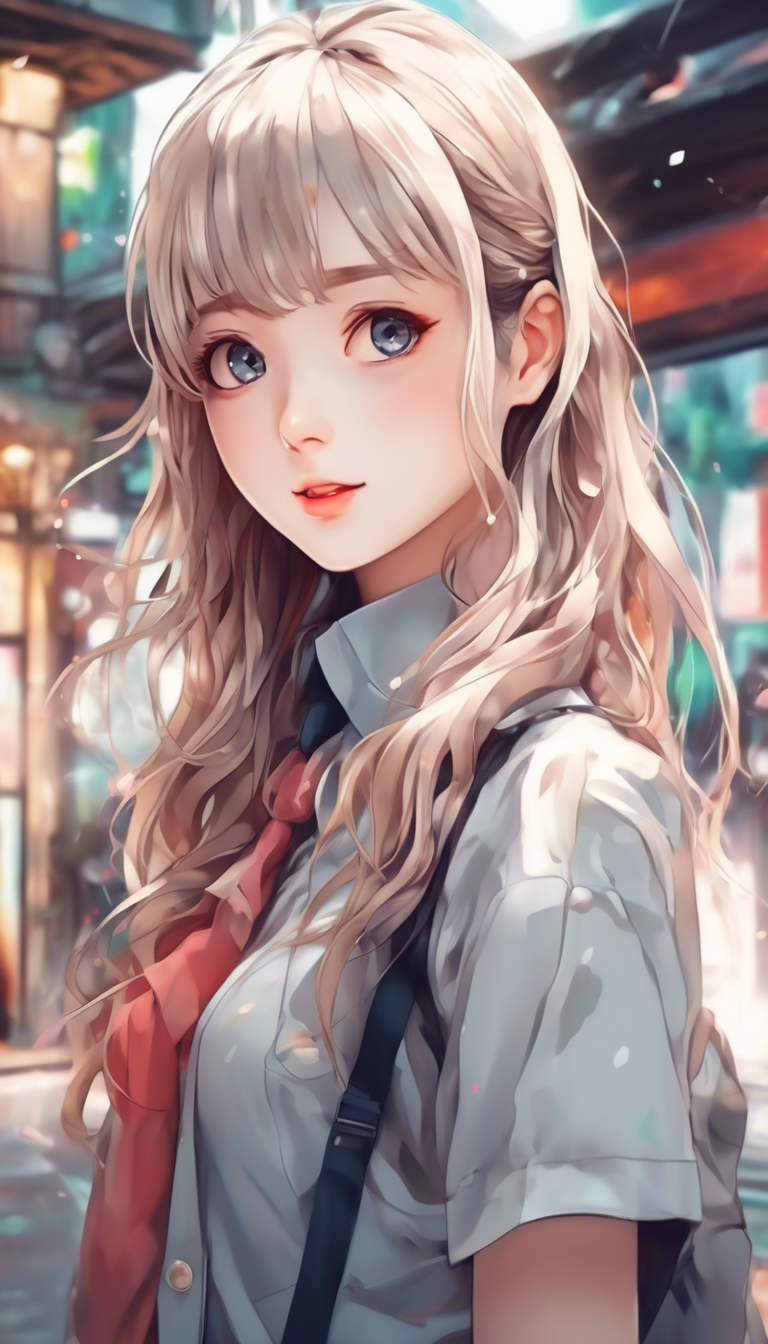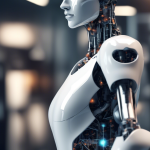The Evolution of AI Art in the Anime Genre
The world of AI art has grown significantly, especially in the vibrant and imaginative realm of anime. The fusion of artificial intelligence and anime art is redefining creativity and opening up new avenues for artists and fans alike. As AI technology becomes more advanced, its influence on anime art continues to expand, offering unique opportunities and exciting innovations.
AI art refers to the use of algorithms and machine learning models to createVisual artworks. Anime, known for its distinctive art style and character design, has embraced this technological trend. Artists leverage AI tools to enhance their creative processes, automate tedious tasks, and even generate fully realized anime-style illustrations.
One of the most significant changes AI has brought to anime art is the speed of creation. Traditionally, producing detailed anime artwork can take artists several hours or even days. With AI tools, the turnaround time is drastically reduced. For instance, AI algorithms can analyze existing styles and generate images based on user prompts within minutes. This efficiency allows artists more time to refine and enhance their works.
In addition to speed, AI art offers incredible inspiration. Artists can use AI-generated ideas as starting points for their projects. By inputting specific themes or styles, creators can receive countless unique designs to ignite their imagination. This collaborative approach between human creativity and AI capabilities encourages an environment filled with innovation.
Moreover, AI’s ability to learn from vast datasets has led to improvements in quality. Machine learning models analyze hundreds, if not thousands, of anime artworks to better understand what makes a character design appealing. As a result, the AI can generate high-quality images that resonate with fans and evoke the classic anime aesthetic.
Here are some key ways AI art has influenced the anime genre:
- Augmented Artistry: Artists can enhance their traditional skills by incorporating AI tools into their workflow. These tools assist in color correction or background creation, allowing artists to focus on core character details.
- Character Variations: AI can generate multiple character designs based on one core idea. This feature encourages experimentation and creativity, making it easier to create diverse characters for various stories.
- Storyboard Creation: Many anime productions require detailed storyboards. AI tools streamline this process by generating quick drafts of scenes, saving valuable time for artists.
- Community Engagement: Anime fans can now partake in the creative process by using AI tools to create their art. This shift empowers fans to contribute to the anime world and develop their imaginative concepts.
Of course, the evolution of AI art in anime raises questions regarding authenticity and the role of human artists. While AI can create stunning visuals, the question remains whether this art possesses the same emotional depth and connection to creators as traditional hand-drawn works. Many artists argue that AI should be viewed as a tool rather than a replacement. It can thrive alongside human creativity, offering assistance, inspiration, and efficiency.
Another interesting development in this area is the rise of AI-generated anime characters. Some projects focus on creating entirely new characters based on popular archetypes within the genre. This fusion of AI and existing character traits not only showcases the capability of machine learning but also keeps the innovation alive in the anime community. Fans are often intrigued by these unique creations, sharing and discussing them across social platforms.
As we delve deeper into the possibilities brought by AI art in anime, it’s essential to recognize the potential ethical issues as well. Questions about copyright, ownership, and the originality of AI-generated pieces arise. With AI having access to a plethora of data, distinguishing between inspiration and copying can become murky. To address these challenges, guidelines and regulations may need to emerge to manage this evolving landscape.
AI art’s impact on the anime genre is undeniable. It has changed how artists work, providing new tools for expression and creativity. As technology continues to evolve, the collaboration between human artists and AI will likely flourish, bridging the gap between tradition and innovation in anime art.
Indeed, this blend of technology and artistic expression opens up a world of possibilities, enriching both the creative process for artists and the overall experience for anime fans. As AI continues to grow, the anime landscape will witness transformations we can only imagine.
How AI is Transforming Character Design in Anime Productions
In recent years, artificial intelligence has made significant strides in various creative fields, and the anime industry is no exception. With the rapid advancements in technology, AI is transforming character design in anime productions in innovative and exciting ways. From automating mundane tasks to inspiring new artistic styles, AI contributions are reshaping the creative process.
One of the primary benefits of using AI in character design is the speed and efficiency it brings to the production process. Traditional character design involves many stages, from sketching concepts to finalizing details. With AI tools, artists can streamline these stages. For instance, AI algorithms can generate character prototypes quickly, allowing artists to focus on refinement and storytelling rather than spending countless hours on initial sketches. This time-saving capability enables studios to meet demanding production schedules without compromising quality.
Moreover, AI assists in creating diverse character designs by suggesting variations based on existing data. AI systems trained on vast databases of anime styles can predict what elements resonate with audiences. When artists work alongside these tools, they can explore a plethora of designs that might not have initially crossed their minds. This collaborative approach enriches character diversity. By incorporating AI suggestions, creators can design characters that appeal to a broader audience, enhancing the overall viewing experience.
Another intriguing application of AI in anime character design is its influence on character style and aesthetics. AI can analyze and generate unique styles based on input from artists. For example, if an artist wishes to blend classic anime aesthetics with modern trends, AI tools can assist in achieving that desired look. This innovative fusion helps push the boundaries of traditional design, allowing artists to experiment and create captivating and fresh characters. It encourages creators to step outside their comfort zones and try unusual styles they may not have considered prior.
Furthermore, AI-driven tools contribute to character consistency throughout a series. Maintaining uniformity in character design across episodes is crucial for viewer engagement. AI technology can track character features, expressions, and aesthetics, ensuring they remain consistent in every scene. This capability is particularly beneficial for long-running series where subtle differences can emerge over time. Keeping characters looking the same not only ensures quality but also strengthens audience connection and emotional investment.
The integration of AI in character design also paves the way for the personalization of anime characters. By analyzing viewer preferences and trends, AI can guide creators in designing characters that resonate with specific demographics. If certain traits or styles are favored by a particular fanbase, AI can suggest adjustments to cater to those tastes. This personalization creates stronger connections between viewers and characters, enhancing overall enjoyment and engagement.
While the benefits are substantial, it’s essential to consider the balance between human creativity and AI assistance. AI is a tool, not a replacement for the artistry and vision that human designers provide. The most successful productions will be those that leverage AI to enhance, rather than dictate, the creative process. The integration of AI should be seen as a partnership—providing artists with new inspirations and capabilities while still allowing them to lead with their unique perspectives.
As the anime industry continues to embrace AI in character design, several trends are becoming evident:
- Enhanced Collaboration: Artists and AI working together can produce results that neither could achieve alone.
- Diverse Aesthetics: AI allows for a broader exploration of styles, blending various influences effectively.
- Data-Driven Decisions: The insights gained through AI analytics can guide character narrative and design elements to better match audience expectations.
- Faster Prototyping: AI tools facilitate quicker iteration and feedback, significantly speeding up the design process.
Looking ahead, the future of character design in anime productions is bright, thanks to AI. As technology continues to evolve, we can expect even more innovative designs that captivate audiences around the world. Embracing these advancements opens doors to endless possibilities for creativity, allowing creators to tell more compelling stories through their characters. While maintaining the critical role of artists’ imaginative power, AI can indeed serve as an invaluable partner in the journey of anime character design.
Conclusion
The landscape of anime has shifted dramatically with the rise of AI art, marking a new chapter in creative expression. This evolution has resulted in remarkable advancements that not only enhance the aesthetics of anime but also open doors to innovative storytelling. As artists and studios embrace AI technology, they can explore a broader range of visual possibilities, blending traditional techniques with cutting-edge tools. This fusion allows creators to deliver more vibrant and diverse anime experiences.
AI is also redefining character design in anime productions. By leveraging machine learning algorithms, creators can develop unique and captivating characters more efficiently. These tools can analyze successful designs, providing inspiration and guiding designers through the creative process. This results in characters that resonate with audiences while also allowing for quicker turnaround times in production.
Moreover, the collaboration between human artists and AI can lead to groundbreaking works that push the boundaries of what anime can achieve. Designers can experiment with varied styles, textures, and colors, leading to characters that capture the imagination in fresh and exciting ways. The potential for personalization is immense, letting fans connect more deeply with the characters they love.
The integration of AI into the anime genre is not just a trend; it’s a revolution. As technology continues to evolve, so too will the art forms we know and love. Anime enthusiasts can look forward to a future where creativity knows no bounds, and character designs become even more dynamic and engaging. Embracing this transformation opens up endless possibilities, ensuring that AI art will play a crucial role in shaping the future of anime.


